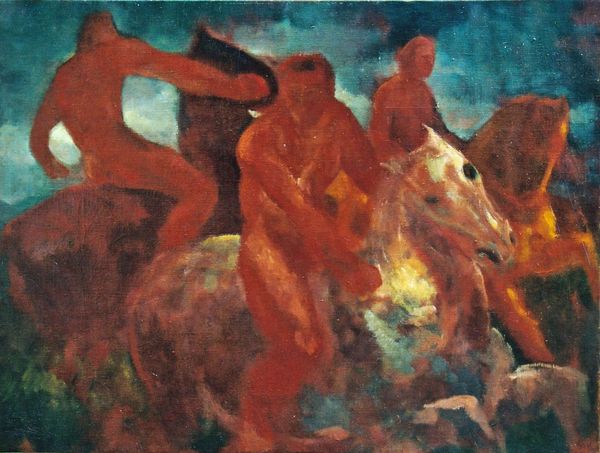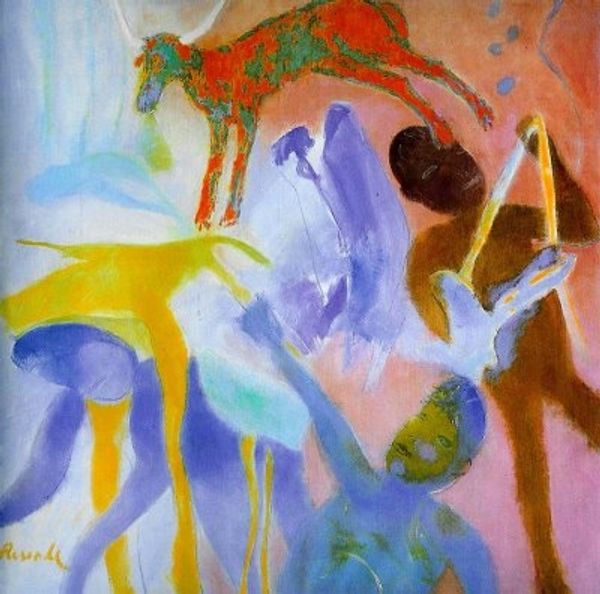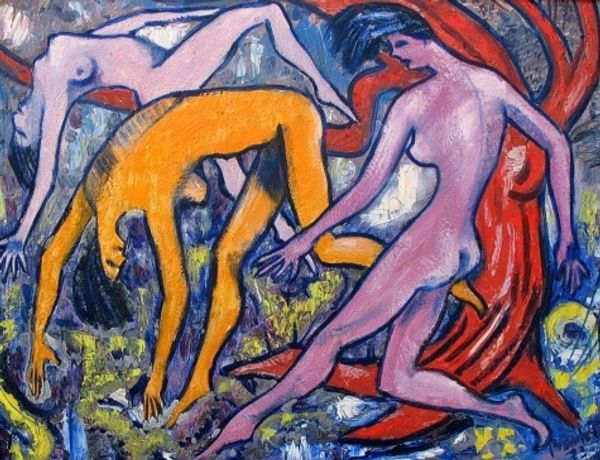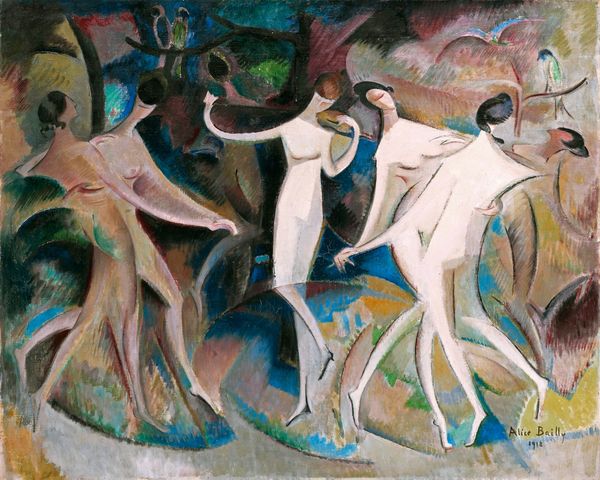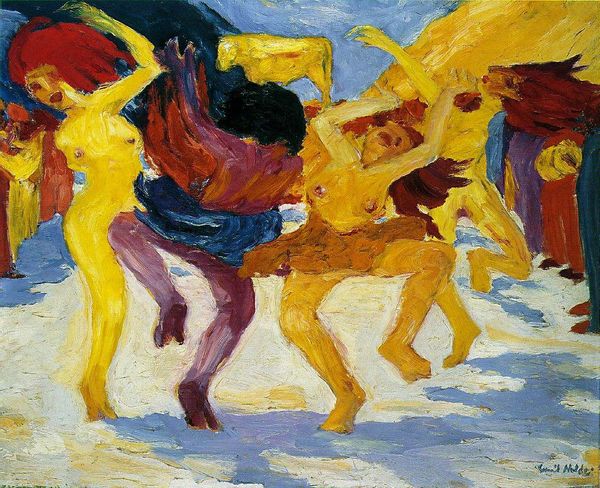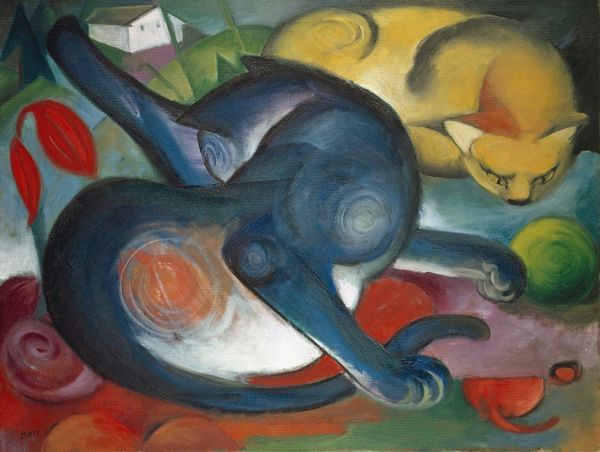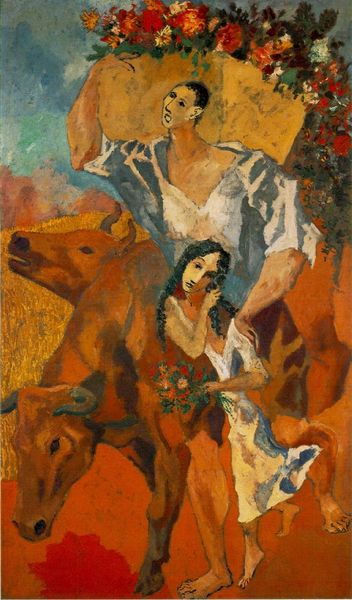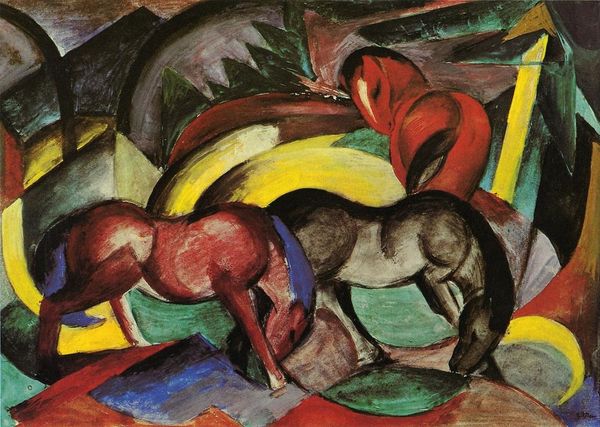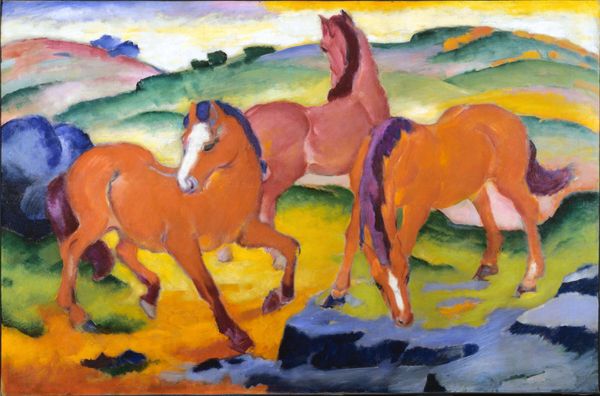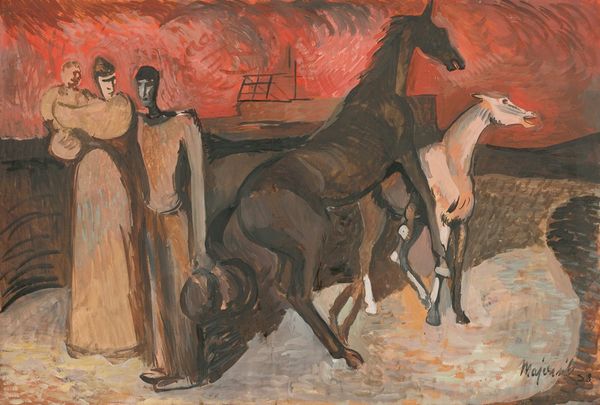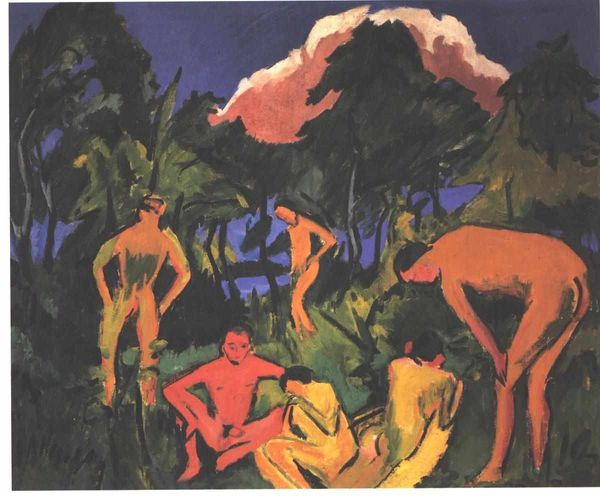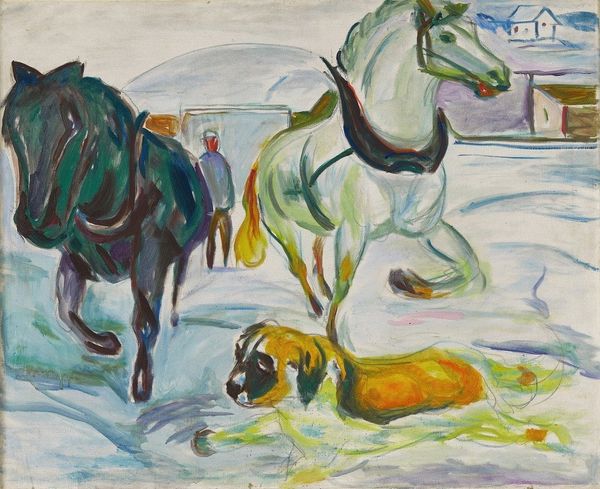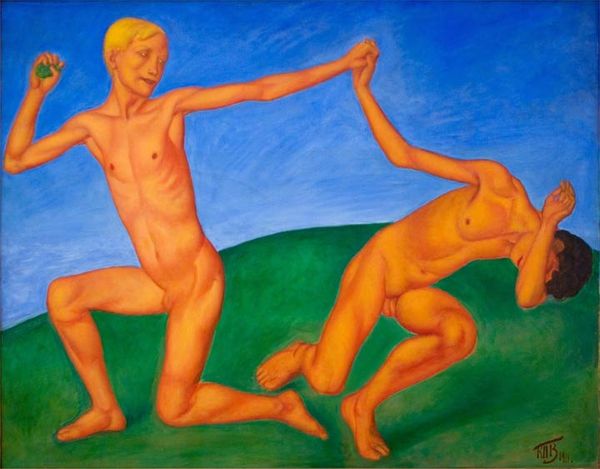
Copyright: Leiko Ikemura,Fair Use
Editor: This is an untitled oil painting from 1984 by Leiko Ikemura. There's something unsettling about the figures and the blue horses. How do you interpret this work formally? Curator: Its power lies in its masterful deployment of color. The juxtaposition of the intense blue of the horses against the ochre and orange of the figures creates a visual tension. Note how Ikemura uses color to delineate form, almost sculpting with paint. Editor: So you’re focusing on the artist's use of color. But what about the strange composition and the lack of detail? Curator: Precisely. The flattened perspective and the reduction of form to basic shapes emphasize the two-dimensionality of the canvas. Ikemura draws attention to the painting as an object, rather than a representation of reality. Are we looking at abstracted form or raw expression? The rough texture created by the impasto technique is also noteworthy. Each mark and dab of paint contributes to the overall expressive effect. Editor: It's interesting how you see the emphasis on the materials and techniques as contributing to the meaning. So it's about the painting itself, and not what it represents? Curator: Not exclusively, no. But the *how* heavily informs the *what*. We are invited to engage with the artwork on a purely visual level, appreciating the formal elements rather than getting lost in narrative. Look closely at how light dances across the canvas; does it give depth to an otherwise static image? Editor: I never really thought about the light and flatness being in conversation like that. I’ll definitely look more closely at that aspect in future paintings. Curator: Indeed. Understanding the formal language of art allows us to decipher its visual syntax and discover a new understanding.
Comments
No comments
Be the first to comment and join the conversation on the ultimate creative platform.
